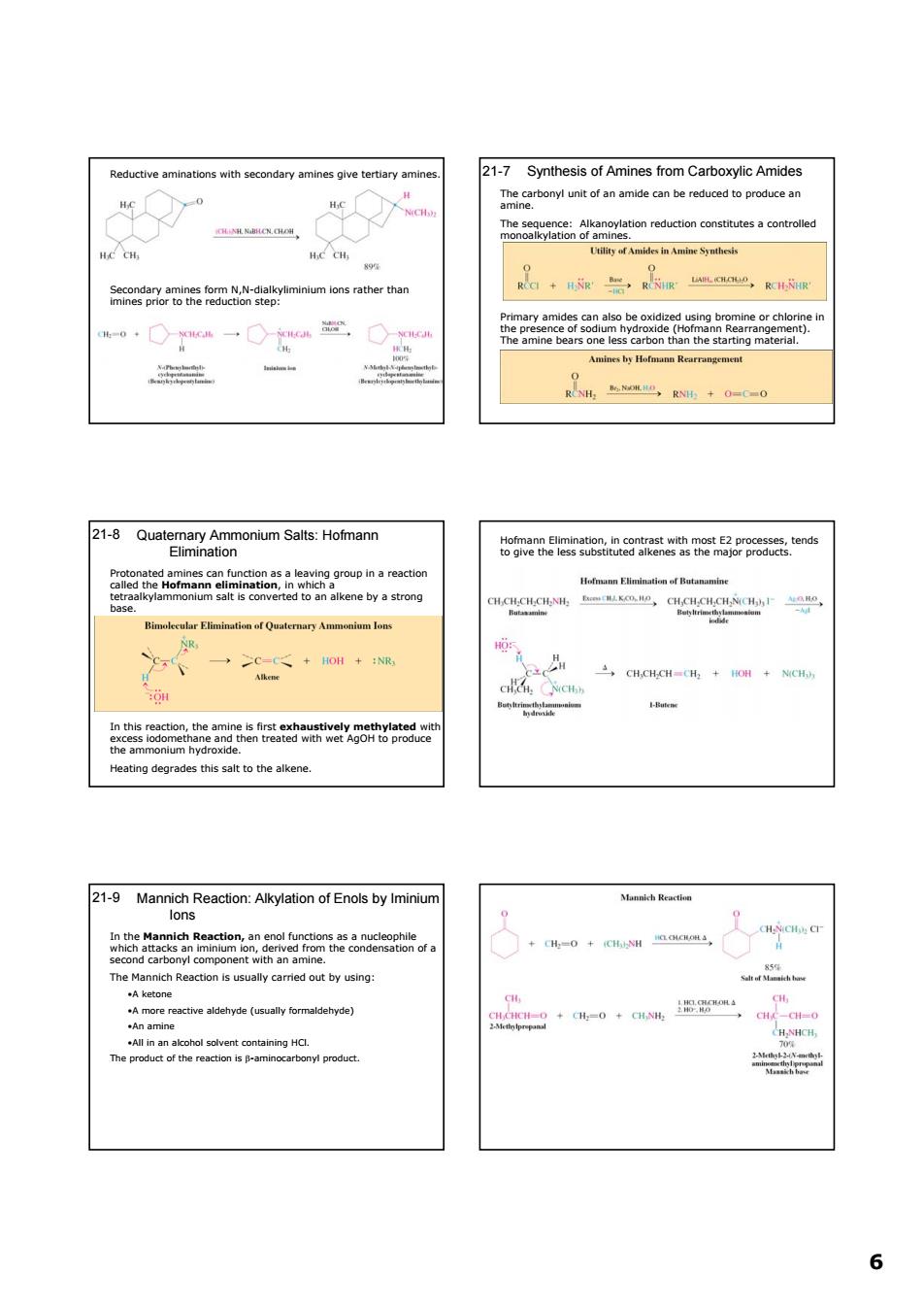正在加载图片...

21-7 Synthesis of Amines from Carboxylic Amides ion reduction constitutes a controlled 器gpo说a的inothern the s 兰 Tgoaneahmnmsasotnam 也geneeageca8raathet2pedands lkene by a strong 8aog 21-Mannich Reaction:Alkylation of Eno by minium The Ma 66 Reductive aminations with secondary amines give tertiary amines. Secondary amines form N,N-dialkyliminium ions rather than imines prior to the reduction step: 21-7 Synthesis of Amines from Carboxylic Amides The carbonyl unit of an amide can be reduced to produce an amine. The sequence: Alkanoylation reduction constitutes a controlled monoalkylation of amines. Primary amides can also be oxidized using bromine or chlorine in the presence of sodium hydroxide (Hofmann Rearrangement). The amine bears one less carbon than the starting material. Quaternary Ammonium Salts: Hofmann Elimination 21-8 Protonated amines can function as a leaving group in a reaction called the Hofmann elimination, in which a tetraalkylammonium salt is converted to an alkene by a strong base. In this reaction, the amine is first exhaustively methylated with excess iodomethane and then treated with wet AgOH to produce the ammonium hydroxide. Heating degrades this salt to the alkene. Hofmann Elimination, in contrast with most E2 processes, tends to give the less substituted alkenes as the major products. Mannich Reaction: Alkylation of Enols by Iminium Ions 21-9 In the Mannich Reaction, an enol functions as a nucleophile which attacks an iminium ion, derived from the condensation of a second carbonyl component with an amine. The Mannich Reaction is usually carried out by using: •A ketone •A more reactive aldehyde (usually formaldehyde) •An amine •All in an alcohol solvent containing HCl. The product of the reaction is β-aminocarbonyl product